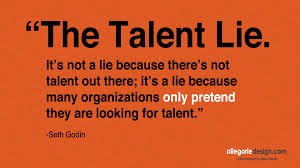Talent Acquisition has become challenging
 Talent acquisition is the process of finding and acquiring skilled human labor for organizational needs. An organization needs to be ever ready to meet any labor requirement at various levels. From the context of the HR profession, talent acquisition usually refers to the talent acquisition department or a team within the Human Resources department. The talent acquisition team is responsible for planning, sourcing, assessing, hiring and on-boarding candidates to fill roles that are required to meet company goals and fill project requirements.
Talent acquisition is the process of finding and acquiring skilled human labor for organizational needs. An organization needs to be ever ready to meet any labor requirement at various levels. From the context of the HR profession, talent acquisition usually refers to the talent acquisition department or a team within the Human Resources department. The talent acquisition team is responsible for planning, sourcing, assessing, hiring and on-boarding candidates to fill roles that are required to meet company goals and fill project requirements.
At P&G, they receive a million of applications every year. Applicants are made to take several assessments before being invited to meet with P&G’s selection experts. Among the first steps in the selection process is the Adaptive Reasoning Test (ART). This cognitive ability test represents some of the most significant advancements made in cognitive testing in decades, and every candidate regardless of the role they are applying for, takes it. For P&G talent acquisition is not only filling positions, but also utilization of the candidates and their skills that come out of a rigorous recruiting process as a means to fill similar positions in the future also.
Talent acquisition is an exclusive function and it is comparatively a new development. In many companies, recruiting is still a vague process. And, recruitment in many companies is a function of an HR generalist. A separate designation of talent acquisition is created because it is required to meet the advanced and unique functions. Modern talent acquisition is a strategic function of an organization, encompassing talent procurement, but it also looks at workforce planning functions such as organizational talent forecasting, talent pipelining, and strategic talent assessment and development.
High-performing companies build unique and powerful ways to source and access top employees. One innovative tactic is the use of social networks to build talent “communities” supported by full-time employees, retired workers, independent contractors, and everyone in between. AT&T’s talent acquisition department, for example, attracts potential team members by providing a forum to talk about mobile computing and telecommunications in a fun and exciting way.
 Talent acquisition is swiftly becoming a unique profession, perhaps even distinct from the practice of general recruitment. Talent acquisition professionals are usually skilled not only in sourcing tactics, candidate assessment, and compliance and hiring standards, but also in employment branding practices and corporate hiring initiatives. Talent acquisition as a function has become closely allied with marketing and PR as well as Human Resources. As global organizations need to recruit globally with dissimilar needs and requirements, effective recruiting requires a well thought out corporate messaging around hiring and talent development.
Talent acquisition is swiftly becoming a unique profession, perhaps even distinct from the practice of general recruitment. Talent acquisition professionals are usually skilled not only in sourcing tactics, candidate assessment, and compliance and hiring standards, but also in employment branding practices and corporate hiring initiatives. Talent acquisition as a function has become closely allied with marketing and PR as well as Human Resources. As global organizations need to recruit globally with dissimilar needs and requirements, effective recruiting requires a well thought out corporate messaging around hiring and talent development.
When General Motors decided to ramp up the production of its flagship electric vehicle, the Volt, the company faced a significant talent challenge they faced terrible shortage of engineers and scientists with a background in electronics. They tried to draw talent from Silicon Valley and other technology centers to Detroit which proved ineffective and difficult initially. GM decided to enhance its recruiting process by building talent communities, drawing more and more people with the required skills into its network.
To help build these communities, GM enlisted engineers and technical staff to write about their jobs, highlighting the exciting work; the rewarding, socially important job opportunities at the company; the high quality of life and relatively low cost of living in Detroit’s suburban neighborhoods; and the many cultural attractions and professional sports teams in the city. Slowly, the company built a growing talent network, strengthening it through social media. New facts and insights about the company were shared among wider circles of talent, creating a positive ripple effect and a more robust talent network. This approach helped GM attract the talent needed to meet deadlines, hiring requirements, and project demands.
Talent acquisition professionals often craft the unique company message around the approach the company takes to hiring and the ongoing development of employees. The employment brand therefore encompasses not only the procurement of human capital, but the approach to corporate employee development.
 Modern talent acquisition is becoming a unique skill-set. Because talent acquisition professionals many times also handle post-hire talent issues, such as employee retention and career progression, the talent acquisition role is quickly becoming a distinct craft. Some recruitment industry advisors even advocate for a talent department unique from the HR department, because talent acquisition and development is so entangled with a company’s ultimate success and effectiveness.
Modern talent acquisition is becoming a unique skill-set. Because talent acquisition professionals many times also handle post-hire talent issues, such as employee retention and career progression, the talent acquisition role is quickly becoming a distinct craft. Some recruitment industry advisors even advocate for a talent department unique from the HR department, because talent acquisition and development is so entangled with a company’s ultimate success and effectiveness.
At Google test scores no longer are used as important parameter. Instead, the company looks at how effectively candidates pick up new information and solve problems, these qualities are better predictors of performance. Also, Google looks at ‘emergent leadership,’ or the ability to step in to help solve a problem, and just as importantly, to step back when it makes sense for someone else to take charge. They prefer candidates who are comfortable with ambiguity, bringing something new to the product mix, and having intellectual humility. This they call ‘Googleyness.’
As a craft, talent acquisition is not new; it is the simple process of recruiting good talent to meet company’s needs. As a profession, however, talent acquisition is quickly evolving into a unique and important job function. In few cases of Strategic Talent Acquisition, clients will recruit today for positions that do not even exist today but are expected to become available in the future. Taking the long term strategic approach to talent acquisition has a huge impact on how an approach is made to a candidate.
It’s a common practice these days: many companies are leveraging on LinkedIn, Facebook, Twitter, Glassdoor, Google, and other social networks to build a persuasive employment brand, to find talent, and market their companies to passive job candidates. They aggressively organize referral marketing programs and send their key executives to universities and other critical sources of new talent around the world.
Corporate are using various recruitment strategies for hiring talented candidates.
Companies have started to treat recruitment function like marketing function: Talented people also like to join corporate which have best HR practices. Corporate need good integrated and communications strategy that attracts candidates and employees besides customers.
Keep the search on: Companies now extend the targets for strategic recruiting. Who are you looking for? Are there new talent pools? Ones you can develop? Perhaps talent you can access (such as freelancers) but not hire? Also consider where you are looking: Search globally as well as across industries and functions. Companies are now going beyond Facebook and Linkedin. Nearly every company uses social networks to post job openings. Innovative companies also leverage social media to build broader and robust talent communities. But, some companies are using networks of people interested in the company’s products or the company itself who might turn into high-quality recruits.
Buying big data from everywhere: Organizations now leverage on big data tools from vendors such as LinkedIn, Facebook, Entelo, Gild, TalentBin, Work4, Identified, and others to identify and source quality candidates around the world. They leverage on new scientific assessments and big data tools to locate and assess high-quality candidates who fit the style and type of workers needed. Corporate apply talent analytics to identify the company’s top sources of talent, understand effective interviewing techniques to determine “the right fit” to improve the quality and efficiency of hiring.
According to PricewaterhouseCooper’s (PWC) 2-14 CEO survey, seventy percent of business leaders are concerned about the availability of key skills. An end-to-end talent strategy provides more precision in finding, keeping, and enhancing the skills needed now and in the future.












































